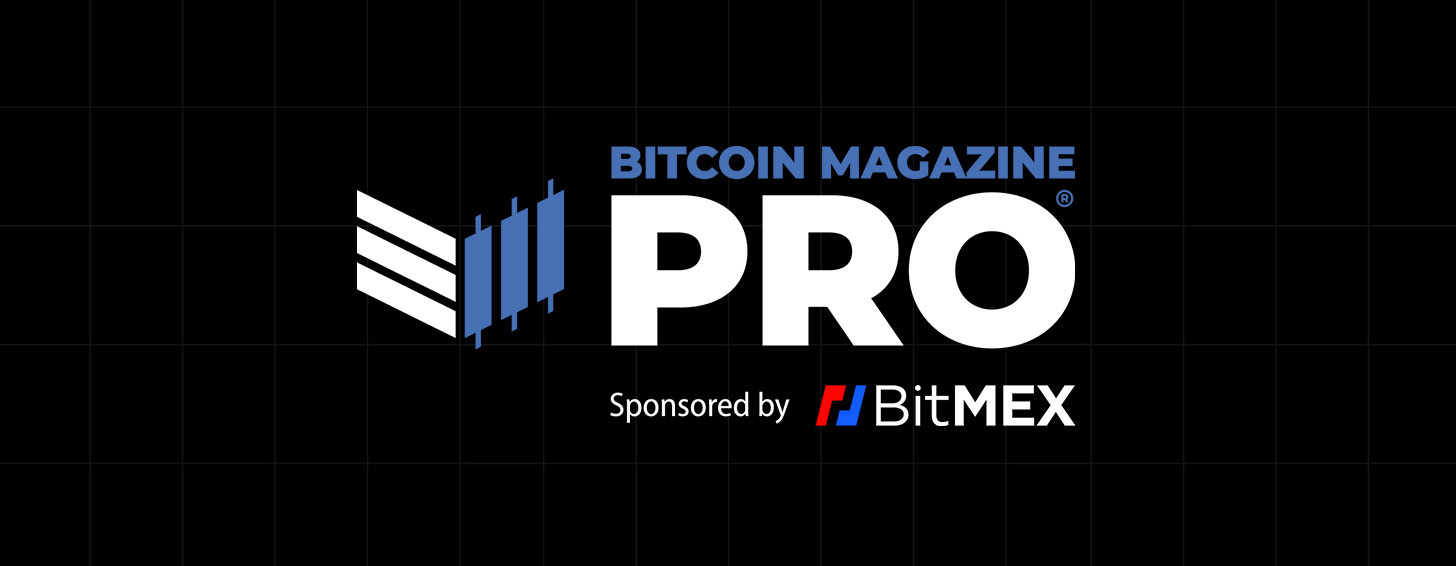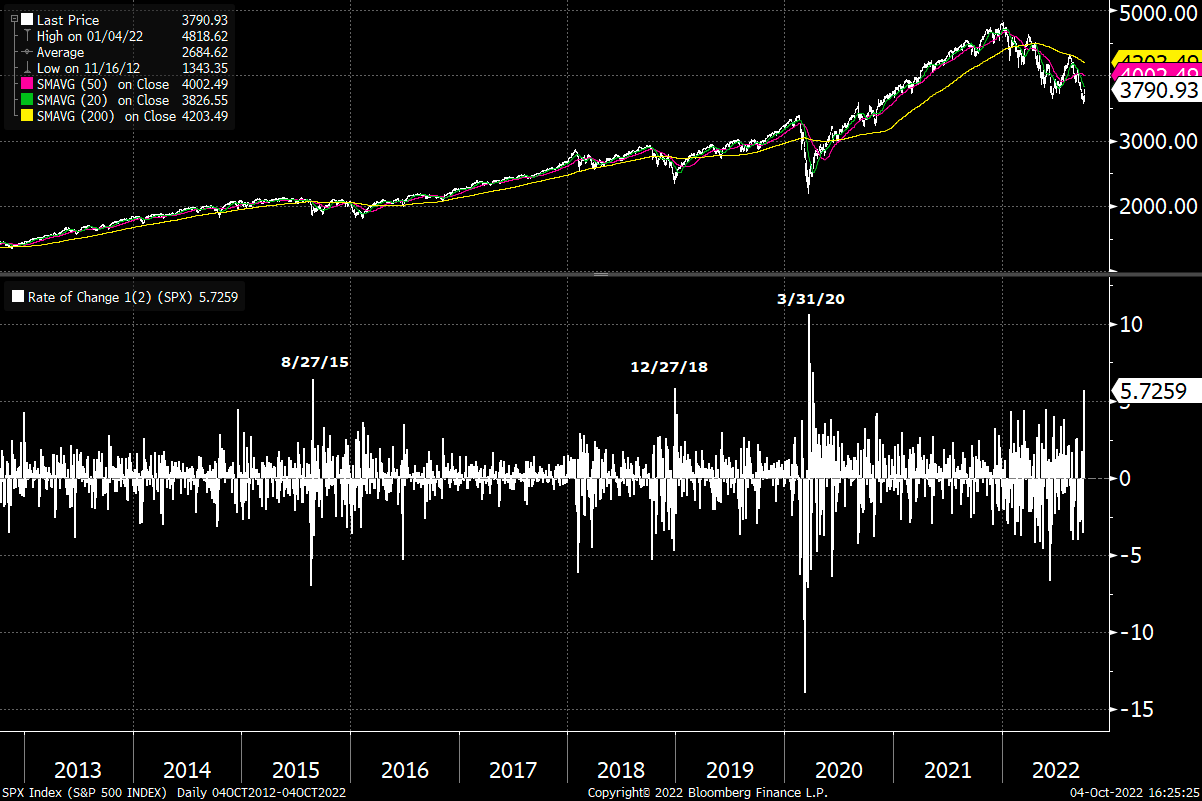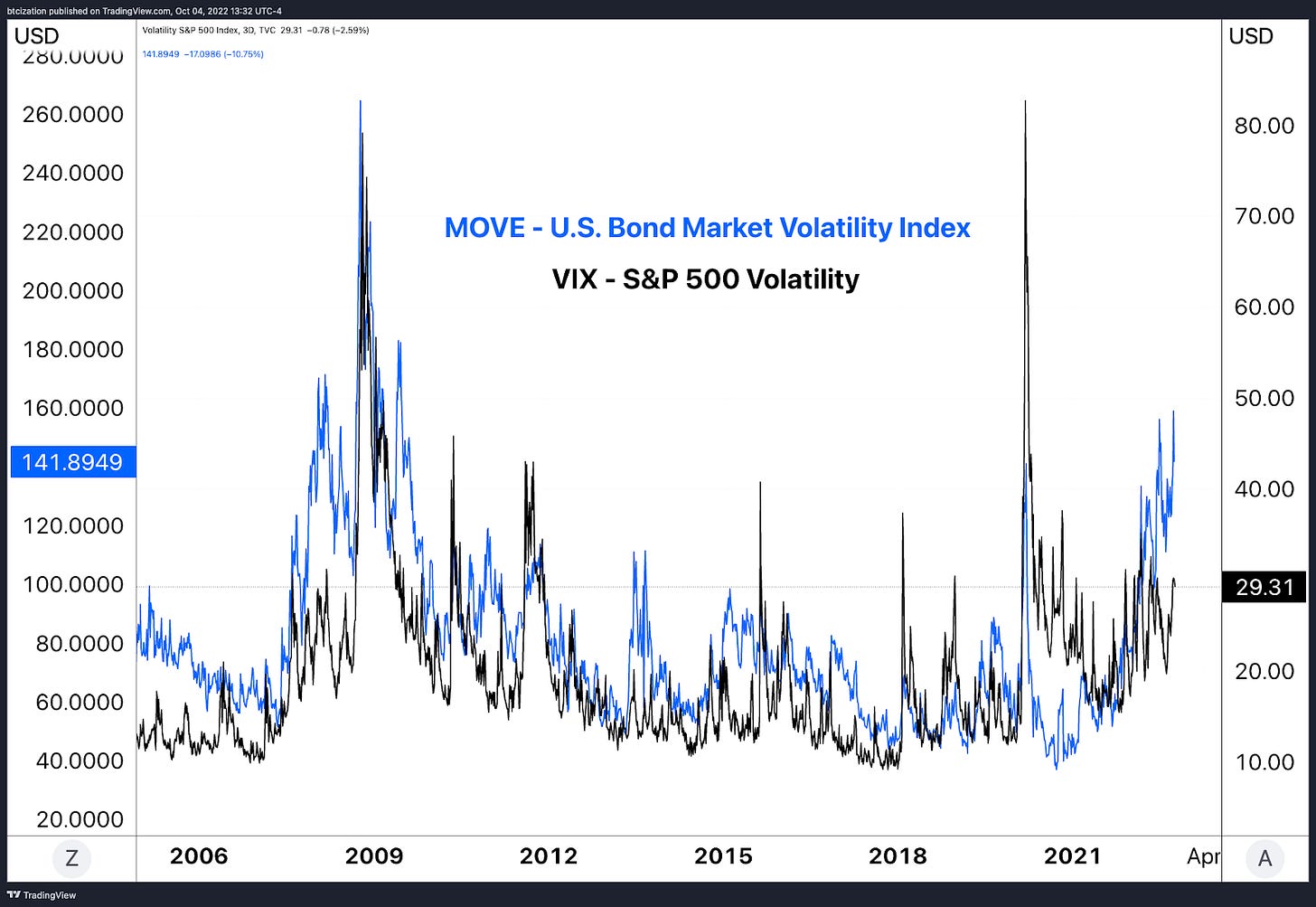What To Expect When You’re Expecting Volatility
Volatility thrives in uncertainty and historically, it proliferates in bear markets. We examine the volatility conditions of Bitcoin, S&P 500, and Nasdaq for insights into today's market environment.
Relevant Past Articles
Word Of The Day: Volatility
Are you prepared for increased volatility? It’s common for markets to only get more volatile as we go deeper into bear markets. As uncertainty, illiquidity and impatience grow, more market participants start to hope for market extremes: either that the market has bottomed and a new bull cycle is one Federal Reserve pivot away or that the limit down, margin call liquidation day will happen imminently because of a Credit Suisse collapse. Everyone hangs on the edge with each major market move to give them some sort of signal. Price ranges start to widen and some (would-be) weekly or monthly moves are condensed into just a single day of action.
Even arguably one of the best investors of all time, Stanley Druckenmiller, finds today to be one of the hardest environments to figure out:
“I have been doing this for 45 years and between the pandemic, the war and the crazy policy response in the U.S. and worldwide, this is the hardest environment I have ever encountered to try and have any confidence in a forecast six to twelve months ahead.”
For most, it’s best to sit out the action and have a large risk-off position, ready to deploy after markets have stabilized or calmed down.
Bitcoin is now following the latest 5.52% S&P 500 (SPX) rally from a new 3,586 local low. As with most bear market rallies so far, the latest rally has been swift in just a matter of days making more of the market uncertain about its next direction. It looks like anything but a “healthy” market move. We still maintain our view that new lows are likely still to be made and that we’ve yet to reach a final conclusion to the cycle for equities, risk assets and bitcoin.
We will remind readers of the magnitude of bear market rallies that we’ve seen so far and the magnitude of these rallies in 2000 and 2008 analogues. There are other cycles to study and compare but these are just a few recent examples.
We’ve already seen a significant 17.41% rally from lows for the SPX with bitcoin running to $25,000. Yet, that didn’t change its next reversion lower and, what we think, is the medium-term downside trajectory playing out still. Even in the last-stage collapses of 2002 and 2009, the S&P 500 saw rallies over 20% before going lower. As the market piles in, overshorting bloody conditions and doomsday news on higher leverage, remember that there’s no free lunch.
Even taking a more historical view back to 1970, we see more extreme periods of realized volatility and larger swings in 1-day changes playing out during bear market or recession-like conditions. The Nasdaq’s largest 1-day rallies in history have nearly all come in bear markets and are well over 7% moves.
On a two-day timeframe, the combined move to the upside for the S&P 500 Index was among its largest of the last decade.
Source: @MrBlonde_macro
Another interesting point to note is that bear markets are typically short, lasting 10 months on average. That 10-month benchmark would roughly put us to where we are today. Yet, there’s a useful idea and thesis to be made that the current destruction we’ve seen so far has been about the readjustment to a unique and historic time for rates, bonds and credit. We’ve barely even arrived at what is the classic and cyclical earnings bear market.
As we approach the bulk and most significant announcements of Q3 earnings season this month, be prepared for scenarios where earnings continue to deteriorate and surprise to the downside that would continue this bear market.
What’s been a useful marker to signal that the bottom is closer is actually an explosion in volatility playing out. These events don’t necessarily equate to market bottoms, but can be precursors. An easy way to see this is through the S&P 500 Index bottoms and the VIX looking at a small sample size since 2000. Although forward volatility has been elevated in the market, it hasn’t reached the type of levels most, including us, have been expecting.
The VIX lagging behind the MOVE index (Merrill Lynch Option Volatility Estimate, a forward measure of U.S. Treasury volatility) has been one of the more interesting trends over the last year.
Just today, The Wall Street Journal cited a new report from the International Monetary Fund, highlighting “the issues open-end funds present to the financial system, including potentially tightening financial conditions and adding to market volatility during times of stress.”
Source: Bloomberg
As bonds, currencies, and global equities all have continued trading with increasing levels of volatility, the recent historical and implied volatility of bitcoin is eerily muted compared to historical standards.
While the lack of recent volatility in bitcoin could be a sign that much of the leverage and speculative mania of the bull market has been almost entirely washed out, our eyes remain on the outsized legacy markets for signs of fragility and volatility, which could serve as a short/intermediate-term headwind. To cite a piece of ours released in February,
“What a lot of this results in is higher periods of volatility, which have been more frequent over the last few months. Higher volatility is a direct result of lower credit market liquidity. Looking back at an extreme period of volatility during March 2020, markets violently sell-off in the face of a credit unwinding. Like most risk assets, bitcoin is severely affected in these higher periods of market volatility and rising U.S. dollar strength as told through the VIX relationship. We’re due for more market volatility going forward.
“Yet in the aftermath, this is the opportunity for bitcoin. Is bitcoin a beneficiary of the massive credit bubble around the world? Undoubtedly. If credit markets continue to unwind will the price of bitcoin face headwinds? Almost assuredly.”
What The Hell Is Going On With Financial Markets? - February 23, 2022
While the world around bitcoin’s price action looks to be becoming increasingly uncertain, the Bitcoin network remains completely unaffected at the protocol level, continuing to do its job as a neutral monetary asset/settlement layer, despite its exchange rate volatility.
Ultimately, we expect that the increased volatility and fragility in the legacy system will result in further interventions, bailouts, and central planning. We believe this will push more market participants and asset allocators to seek possible alternatives.
Bitcoin stands to gain, but first, has to withstand the volatile economic storm brought about by macroeconomic conditions.
Tick tock, next block.
Thank you for reading Bitcoin Magazine Pro, we sincerely appreciate your support! Please consider leaving a like and letting us know your thoughts in the comments section. As well, sharing goes a long way toward helping us reach a wider audience!

















Solid piece gentlemen.